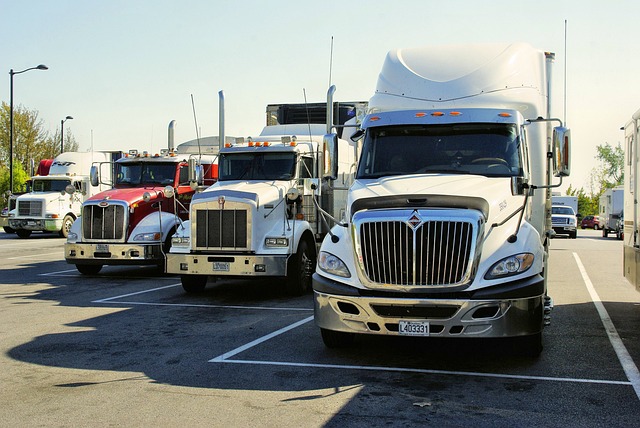Looking to register your car in California? This comprehensive guide breaks down the process, from gathering essential documents like proof of insurance and owner’s identification to using a VIN verifier—a key step for ensuring vehicle authenticity. We’ll walk you through registering online, cover important considerations, and answer frequently asked questions. Get ready to navigate California’s car registration process with ease.
- Understanding the California Car Registration Process
- Gather Necessary Documents for Vehicle Registration
- How to Use a VIN Verifier in California
- Step-by-Step Guide to Registering Your Car Online
- Important Considerations and Frequently Asked Questions
Understanding the California Car Registration Process

Understanding the California Car Registration Process
Registering a car in California involves several steps designed to ensure vehicle safety and compliance with state regulations. The process begins with gathering essential documents, including proof of ownership, insurance, and identification. Once these are prepared, the next crucial step is obtaining a Vehicle Identification Number (VIN) verification. In California, this is typically done through a mobile VIN inspection or a traditional vin inspection at a designated location. The VIN verifier plays a vital role in confirming the vehicle’s authenticity and history, ensuring it meets all legal standards before registration.
After successful VIN verification, you can visit your local Department of Motor Vehicles (DMV) office to officially register your vehicle. Here, you’ll complete necessary forms, pay the registration fees, and provide additional documentation as required. This process is designed to be efficient, but understanding each step—from the initial mobile vin inspection or vin inspection to final DMV submission—is key to a smooth car registration experience in California.
Gather Necessary Documents for Vehicle Registration

Before you begin the registration process, make sure to gather all the essential documents required by the California Department of Motor Vehicles (DMV). The primary document needed is the Vehicle Identification Number (VIN) verifier, which can be obtained through a mobile VIN inspection or a traditional inspection at a certified location. This unique 17-character code is crucial for identifying your vehicle and ensuring its authenticity.
Additionally, you’ll need proof of insurance, a valid driver’s license, and the title or registration from the previous owner if applicable. It’s also recommended to bring along any other relevant paperwork, such as registration renewals or records of maintenance, to streamline the process. Ensure all documents are up-to-date and accurate to avoid delays during vehicle registration in California.
How to Use a VIN Verifier in California

In California, using a VIN verifier is a crucial step during the car registration process. A Vehicle Identification Number (VIN) is a unique code that identifies your vehicle and can be used to verify its history and authenticity. Many online tools and mobile vin verifiers are available for this purpose. To use one effectively, simply input your VIN into the tool’s database, which then cross-references it against various national databases to uncover important details such as previous owners, accident history, outstanding loans, and more.
Choosing a mobile vin inspection or mobile vin verification service can make this process even easier. These services send a technician to your location to perform the check in person, ensuring accuracy and convenience. With just a few clicks or a quick phone call, you’ll have access to detailed information that can save you time and money during registration.
Step-by-Step Guide to Registering Your Car Online

Registering a car in California can be done online, making the process convenient and time-saving. Here’s a step-by-step guide to help you navigate through the digital registration process:
1. Prepare Necessary Documents: Before starting, gather essential documents such as your vehicle’s Certificate of Title (or Proof of Purchase), a valid driver’s license or state ID, and proof of insurance. You’ll also need your Vehicle Identification Number (VIN) for the vin verifier process.
2. Access California’s Online Registration Portal: Visit the official California Department of Motor Vehicles (DMV) website to initiate the registration. The portal will guide you through the steps, which include entering your vehicle details, verifying your identity using the mobile vin verification or vin inspection method, and providing payment information for the registration fee. Make sure to use a secure connection to protect your personal data during this process.
Important Considerations and Frequently Asked Questions

Before diving into the registration process, there are several important considerations to keep in mind. In California, registering a car involves multiple steps and requirements, including ensuring your vehicle meets safety and environmental standards. One crucial aspect is verifying the Vehicle Identification Number (VIN) accurately. The VIN is unique to each vehicle and serves as its fingerprint, critical for tracking ownership history and recall information.
Frequently Asked Questions (FAQs) often surround the registration process. For instance, many drivers wonder about the best way to verify their car’s VIN. While traditional methods involve checking physical markers on the vehicle, modern technology offers convenience through mobile VIN verification services. These services allow owners to use their smartphones for a quick and efficient VIN inspection, providing peace of mind and ensuring all paperwork is in order during the registration process.
Registering your car in California is a straightforward process, made easier with resources like a VIN verifier. By gathering the required documents and following an online registration guide, you can efficiently complete the task. Remember to check frequently asked questions for any potential hurdles. Utilizing tools like a VIN verifier streamlines the experience, ensuring a smooth transition from owner to registered vehicle in The Golden State.
